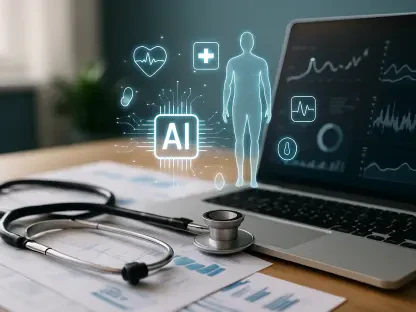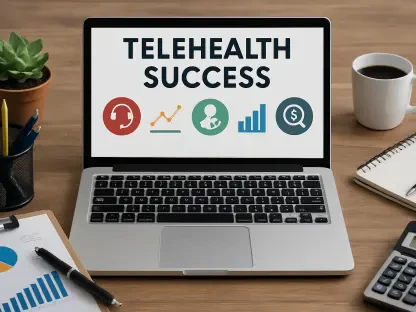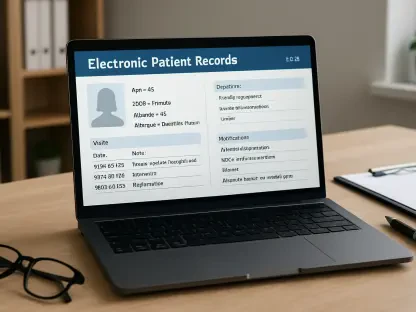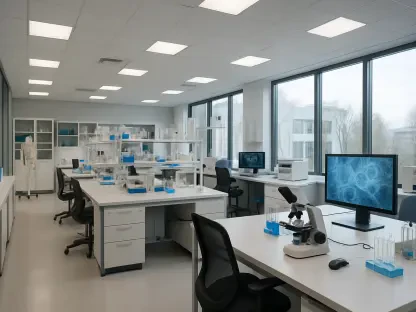Northampton General Hospital has recently embarked on an ambitious digital transformation with the rollout of a cutting-edge Electronic Patient Record system, slated for commencement on June 28. This EPR initiative, designed by Nervecentre, aims to revolutionize patient care delivery by consolidating patient information into one comprehensive, secure digital format. The system aspires to optimize clinical workflow efficiency, granting healthcare professionals real-time access to vital patient details. This move is expected not only to enhance patient safety but also to significantly improve coordination of care by consolidating previously fragmented data sources into a streamlined digital interface.
Transformative Impact on Clinical Processes
Enhanced Efficiency and Decision-Making
The introduction of the new EPR system at NGH represents a pivotal shift in clinical processes, promising to streamline operations and reduce inefficiencies inherent in older systems. By replacing the existing mixture of paper and electronic records, the hospital is poised to decrease redundancies and data duplication, ensuring more focus on patient care. Armed with real-time access to comprehensive patient data, clinicians will be better positioned to make informed decisions swiftly, thereby improving patient outcomes. This access translates to improved diagnosis accuracy, faster treatment initiation, and the potential to avert complications before they arise.
In shifting to a fully digital platform, NGH aims to alleviate the administrative burdens that have long hampered healthcare professionals. By automating routine tasks and minimizing the need for repeated inquiries concerning patient histories, staff can dedicate more time to direct patient interactions. This system is not only a reflection of technological progress but also an earnest response to the growing demand for more responsive and patient-centered healthcare services. Its implementation underscores a broader trend within the healthcare sector to harness digital tools for enhancing both the quality and efficiency of medical care delivery.
Overcoming Initial Adoption Challenges
Despite the promising outlook of the EPR system, the transition is not without its challenges, particularly during its initial phases. Staff adaptation to the new digital tools may lead to temporary disruptions and delays. Recognizing these potential hurdles, Northampton General Hospital has proactively set up extensive training programs and ongoing support measures to facilitate a smooth transition. These programs are designed to equip staff with the necessary skills and confidence to navigate the new system effectively, thereby ensuring that patient care standards remain consistent and uncompromised.
The concerted effort to address transitional challenges reflects the hospital’s commitment to maintaining quality care during this significant change. By providing robust support systems, NGH intends to mitigate any negative impacts on patient care and maximize the advantages of the EPR system. This proactive approach highlights the hospital’s dedication to fostering a culture of continuous improvement and resilience, laying a solid foundation for future technology-driven healthcare advancements.
Commitment to Data Security and Privacy
Upholding Stringent Data Protection Measures
Central to the EPR system’s deployment is the hospital’s unwavering commitment to data security and information governance. Recognizing the sensitive nature of medical records, NGH has implemented stringent safeguards designed to protect patient confidentiality and ensure compliance with relevant regulations. These measures include robust encryption protocols, access controls, and regular audits, which collectively serve to shield patient information from unauthorized access and potential data breaches.
By prioritizing data protection, Northampton General Hospital demonstrates its dedication to upholding trust in its patient relationships. This focus is crucial not only for compliance purposes but also in maintaining public confidence in the hospital’s commitment to ethical and responsible data management. The hospital’s initiatives align closely with the broader industry trends emphasizing the importance of secure digital infrastructure as foundational to modern healthcare systems.
Integration with County-Wide Initiatives
The launch of the EPR system at NGH is not an isolated development but part of a larger, county-wide effort to create an integrated healthcare information network. This initiative, known as the Northamptonshire Care Record, aims to facilitate seamless data sharing across various healthcare providers, including general practice clinics. Such integration is anticipated to improve the continuity of care by providing a holistic view of a patient’s medical history, regardless of the healthcare setting.
This coordinated approach underscores a progressive shift towards more connected and collaborative healthcare systems. By integrating data from multiple sources, the Northamptonshire Care Record enhances healthcare providers’ ability to deliver comprehensive, timely, and personalized care to patients. The alignment of NGH’s EPR system with this initiative signifies a deliberate move towards more coherent and interconnected health services, reflective of the hospital’s strategic vision for future healthcare advancements.
A Digital Future for Patient Care
Northampton General Hospital is embarking on a major digital evolution with the launch of a state-of-the-art Electronic Patient Record (EPR) system starting June 28. Developed by Nervecentre, this initiative is set to transform the delivery of patient care. It aims to compile patient details into one comprehensive, secure digital format, which promises to enhance clinical efficiency. By providing healthcare professionals with immediate access to critical patient information, the system looks to foster real-time decision-making and improve patient safety. Previously, patient data was scattered across multiple platforms, making coordination challenging. This new system is expected to resolve these issues by consolidating the fragmented data into one streamlined digital interface. Beyond patient safety, this transition holds the potential to improve communication and collaboration among healthcare teams. It represents a strategic effort to modernize healthcare practices, thereby improving service delivery and outcomes for patients under the hospital’s care.









